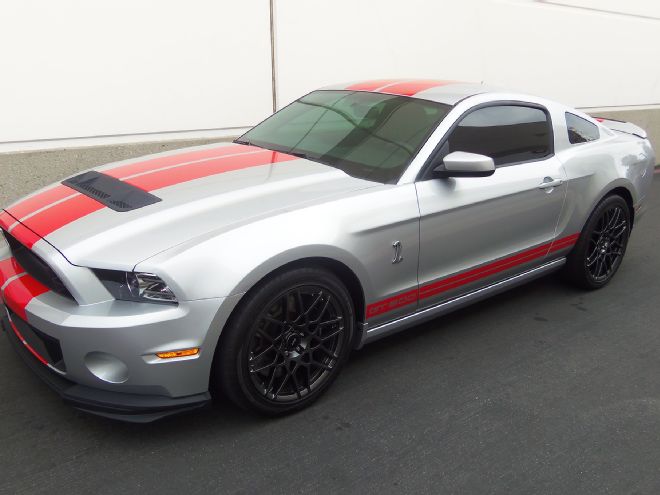
If there is one way you are guaranteed to end up with a fast car, it is to start off with a faster one. It’s much easier to make a fast car faster than to make a slow car fast. We decided to put the idea to the test and apply it towards one of the fastest horses to ever roll off the assembly line, the snake-bitten 2014 Shelby GT500. With the massive 5.8L supercharged four-valve modular pumping out 662 hp at a moment’s notice, the Shelby GT500 is anything but slow. It’s an example of modern hot rod engineering at its finest, but there’s always room for improvement. We decided to make it our mission to see how much power we could squeeze out of the GT500 with just a handful of easy bolt-on mods that any Shelby owner could undertake in his or her garage.
We started with a stock 2014 Shelby GT500 and headed to the experts in all things Mustang at GTR High Performance in Rancho Cucamonga, California. These guys are no strangers to building some of the coolest Stangs around, so we knew they would be able to make the GT500 really scream. We hooked the car up to the Dynojet dynamometer to get our baseline numbers. In stock trim, the Shelby spun the rollers to the tune of 565 hp at 6,600 rpm with the factory supercharger putting out 12.45 pounds of boost. Our peak torque came in at 574 lb-ft of torque.
Follow along as we walk you through building serious power for your Shelby GT500 with a few simple bolt-ons and a little fine tuning.
Phase 1
Once we had our baseline test out of the way, the guys at GTR went to work removing the factory exhaust in favor of a 3-inch JBA stainless steel cat-back exhaust system. A quick comparison of the stock cat-back exhaust and the 3-inch JBA exhaust reveals a less restrictive exhaust system in favor of the JBA pipes. With the factory exhaust out of the way, Ricardo Topete and Pedro Pasoldan quickly bolted in the free-flowing JBA kit with the supplied clamping hardware.
With the car buttoned up, it was strapped to the dyno again to see how much power we picked up. Topete spun the rollers with the GT500 screaming and laid down 603 hp at 6,300 rpm with 12.34 pounds of boost. This time the GT500 saw a peak torque of 625 lb-ft. Not too shabby for a simple cat-back install.
Phase 2
With a high-flowing exhaust netting us more than a few extra ponies, we decided to turn our attention to the induction side of the Shelby. There really was only one way to go if we wanted to make the most of our modifications, so we ordered up a JLT cold air intake to make sure the big 5.8L four-valve engine was getting adequate air to fill its lungs. We decided to install it with the stock throttle-body for this phase of the build. Topete uploaded a custom Kurgan Motorsports calibration tune via an SCT tuner and rolled the Shelby back on the rollers for the moment of truth.
We’d be lying if we said we weren’t giddy at the fact that the GT500 roared on the rollers and managed to produce 621 hp at 6,400 rpm while generating 12.78 pounds of boost. Our torque gains spiked up to 641.45 lb-ft. We picked up 56 rwhp over our stock baseline run, but we were only just getting warmed up.
Phase 3
This time we pulled out the stops and ditched the factory throttle-body in favor of the much larger Ford Racing Performance Parts Super Cobra Jet oval throttle-body as well as another Kurgan Motorsports SCT calibration tune. The Super Cobra Jet throttle-body comes in at a gargantuan 148 by 65 mm and flows 1,797 cfm to allow the big 5.8L to push the limits of power and performance. So how much gain did we see on the dyno? Phase 3 of our bolt-on upgrades netted us 648.25 hp at 6,460 rpm, while the supercharger boosted up to 14.64 pounds. Our peak torque only climbed by about 5 lb-ft, but we were still pretty impressed to see an 83hp gain over our stock baseline with fairly simple bolt-on mods.
Phase 4
While we could have easily left well enough alone, we knew we’d be leaving plenty of power potential on the table by not swapping the stock supercharger pulley out for a smaller-diameter pulley to increase the boost our Shelby was seeing. We decided to install a 2.4-inch VMP Tuning supercharger pulley on our GT500’s stock supercharger. The VMP pulley features a black finish for the stealth stock look and is made of high-tensile strength carbon steel to ensure durability while pushing the boost limits of the factory supercharger.
This 2.4-inch diameter pulley increased the boost up to 16.8 psi, so of course Topete went ahead and swapped out the spark plugs with a new set of NGK V-Power TR6 spark plugs and loaded another one of Bob Kurgan’s custom tunes via the Live Link tuning software.
With all of our bolt-on mods out of the way, it was the moment of truth. When the dust cleared, we looked at our dyno monitor and saw just what we were looking for: 683.05 hp at 6,250 rpm. The pulley swap made us hit peak horsepower at 16 pounds of boost, while our peak torque tipped the scales at 695.72 lb-ft.
We managed to gain just over 118 hp and 121 lb-ft of torque with just a handful of fairly simple and straightforward bolt-on modifications that any self-respecting weekend warrior can accomplish in his or her own garage. Sure, you’ll have to get the engine tuned, but we think it’s well worth the investment to have a car that can fly down the track at breakneck speeds while still being able to cruise down the highway with ease.
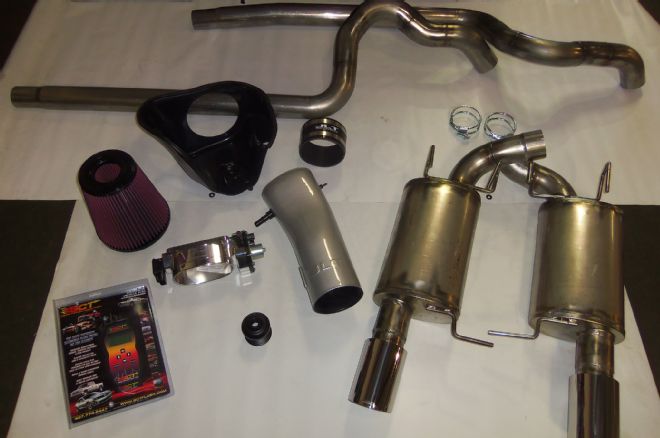 Our goal was to see how much power we could gain on a bone-stock Shelby GT500 with a couple of simple bolt-on modifications as well as a couple of tunes each step of the way. We enlisted the help of JBA Performance Exhaust, JLT Performance, SCT Performance, Kurgan Motorsports, Ford Racing Performance Parts and VMP Tuning to help us breath some new life into our GT500.
Our goal was to see how much power we could gain on a bone-stock Shelby GT500 with a couple of simple bolt-on modifications as well as a couple of tunes each step of the way. We enlisted the help of JBA Performance Exhaust, JLT Performance, SCT Performance, Kurgan Motorsports, Ford Racing Performance Parts and VMP Tuning to help us breath some new life into our GT500.
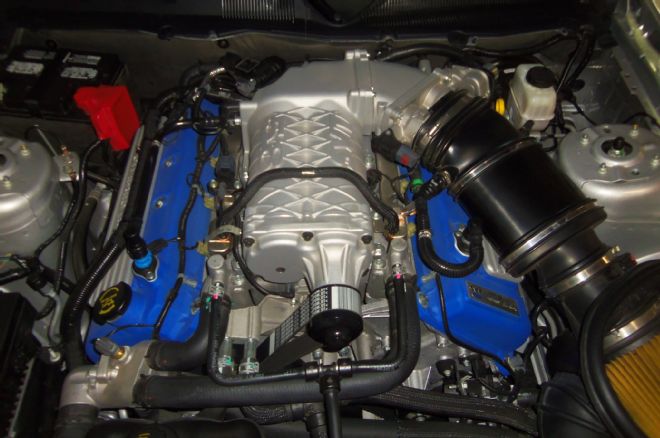 We weren’t kidding when we said we were dealing with a bone-stock Shelby. While the car was impressive in stock trim, we knew that plenty of power potential could be had with a few bolt-on parts.
We weren’t kidding when we said we were dealing with a bone-stock Shelby. While the car was impressive in stock trim, we knew that plenty of power potential could be had with a few bolt-on parts.
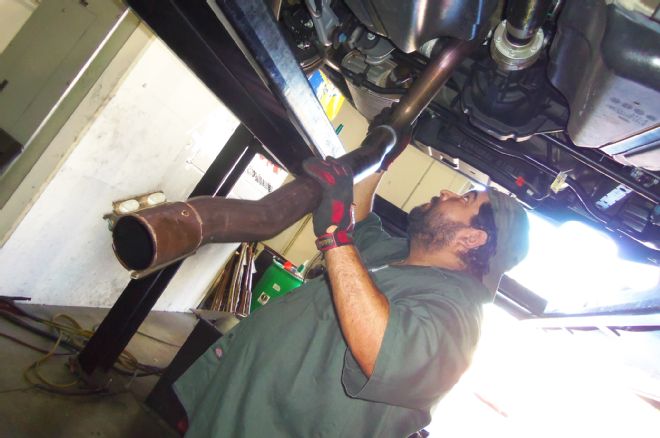 Pedro Pasoldan at GTR High Performance made quick work of removing the factory GT500 exhaust so we could bolt in our free-flowing 3-inch JBA stainless steel cat-back exhaust system.
Pedro Pasoldan at GTR High Performance made quick work of removing the factory GT500 exhaust so we could bolt in our free-flowing 3-inch JBA stainless steel cat-back exhaust system.
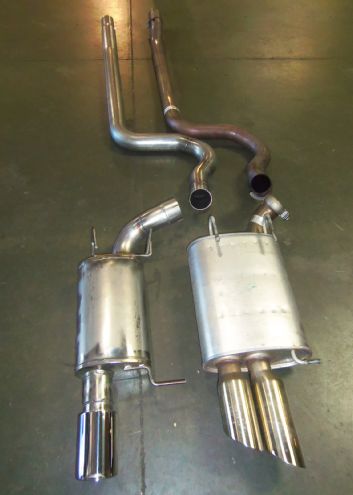 Here you can see a side-by-side comparison of the new 3-inch diameter JBA stainless steel exhaust compared to the Shelby’s factory exhaust.
Here you can see a side-by-side comparison of the new 3-inch diameter JBA stainless steel exhaust compared to the Shelby’s factory exhaust.
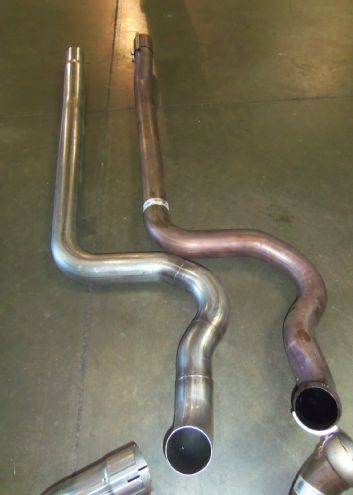 A closer look at the exhaust pipes reveals a less restrictive exhaust system thanks to smoother transitions in the bends, which allow the exhaust to exit faster.
A closer look at the exhaust pipes reveals a less restrictive exhaust system thanks to smoother transitions in the bends, which allow the exhaust to exit faster.
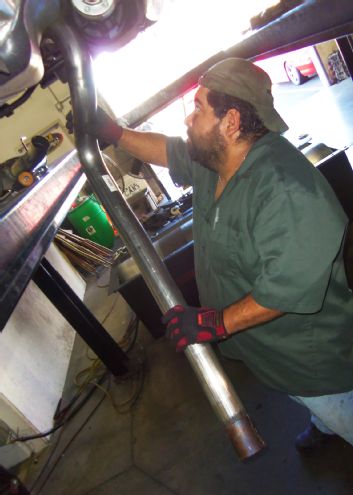 Pasoldan went ahead and installed the JBA cat-back exhaust system.
Pasoldan went ahead and installed the JBA cat-back exhaust system.
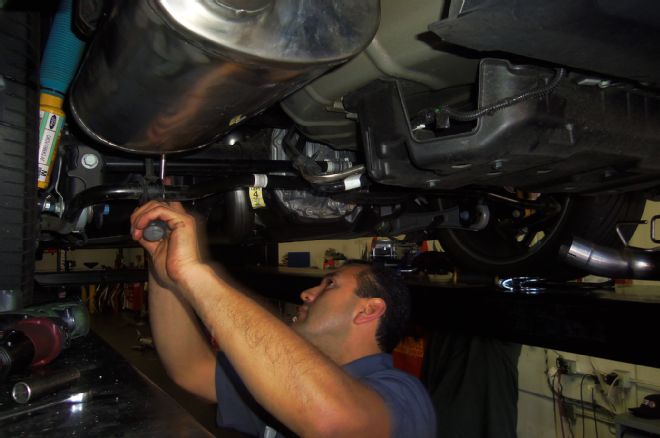 GTR’s Ricardo Topete secured the JBA high-flow mufflers to the 3-inch exhaust with the supplied clamps in the kit.
GTR’s Ricardo Topete secured the JBA high-flow mufflers to the 3-inch exhaust with the supplied clamps in the kit.
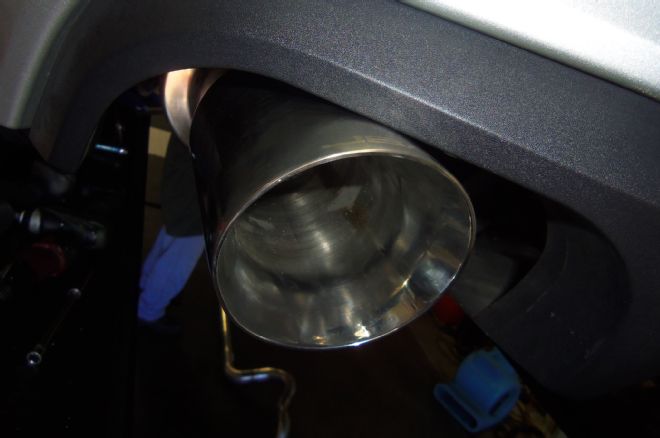 Keep in mind that you want to adjust the height and depth that the mufflers are set at so that they match the exhaust cutouts in the rear bumper.
Keep in mind that you want to adjust the height and depth that the mufflers are set at so that they match the exhaust cutouts in the rear bumper.
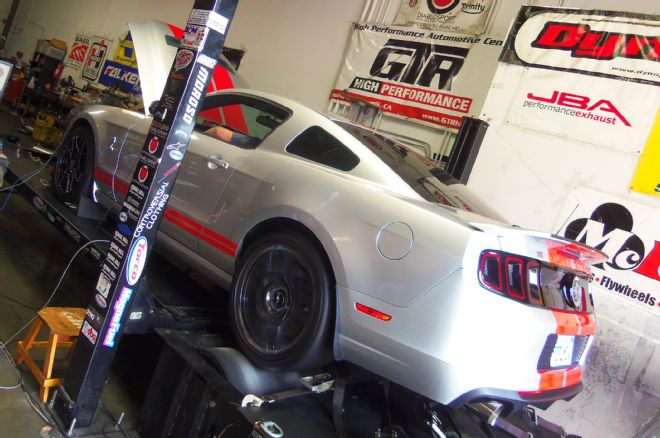 Once our first round of modifications was complete, the guys at GTR strapped the Shelby to their Dynojet dynamometer, got the car up to operating temperature, and finally let it rip through the rollers. This resulted in 603 hp at 6,300 with 12.34 pounds of boost.
Once our first round of modifications was complete, the guys at GTR strapped the Shelby to their Dynojet dynamometer, got the car up to operating temperature, and finally let it rip through the rollers. This resulted in 603 hp at 6,300 with 12.34 pounds of boost.
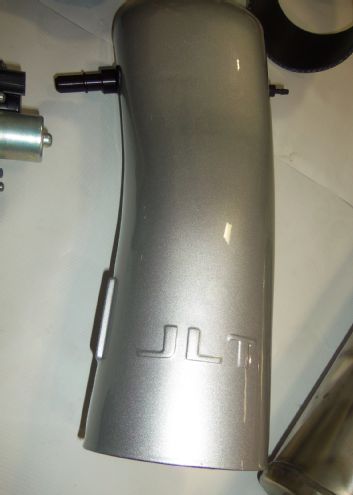 We moved on to Phase 2. This JLT Performance cold air intake is one of the ultimate induction systems around, and, best of all, it’s available in a color-matched configuration so it looks right at home under the hood of your Mustang. The JLT Big Air cold air intake features a 123mm MAF housing that is integrated right in the tube, which improves airflow.
We moved on to Phase 2. This JLT Performance cold air intake is one of the ultimate induction systems around, and, best of all, it’s available in a color-matched configuration so it looks right at home under the hood of your Mustang. The JLT Big Air cold air intake features a 123mm MAF housing that is integrated right in the tube, which improves airflow.
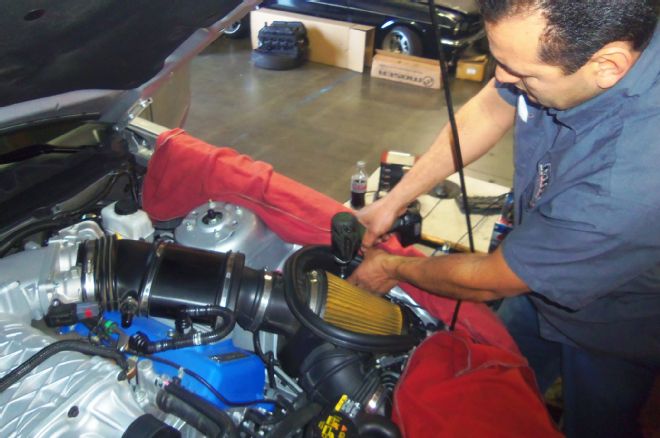 Topete got the stock cold-air-intake system out of the way in no time at all.
Topete got the stock cold-air-intake system out of the way in no time at all.
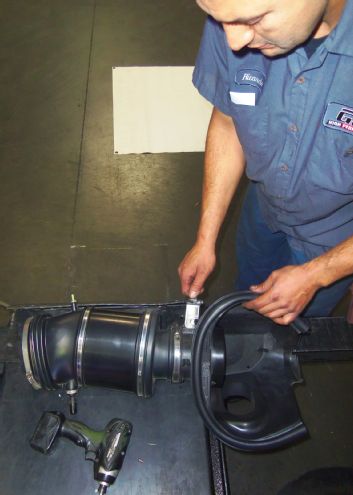 The stock airflow meter is retained, and JLT Performance tells us that it can safely support up to 750 rwhp.
The stock airflow meter is retained, and JLT Performance tells us that it can safely support up to 750 rwhp.
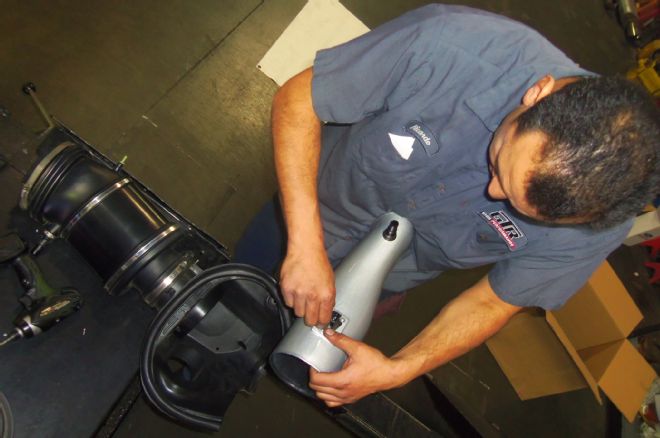
 Installing the JLT Big Air cold air intake is straightforward and simple. It can be done in a matter of minutes with simple handtools.
Installing the JLT Big Air cold air intake is straightforward and simple. It can be done in a matter of minutes with simple handtools.
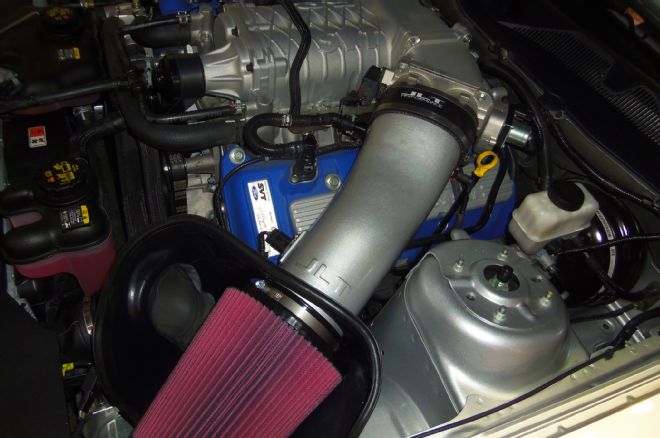
 The JLT Performance Big Air cold air intake requires a custom calibration tune. Topete plugged in the SCT Performance Flash Programmer and loaded one of Bob Kurgan’s custom Kurgan Motorsports calibration tunes onto the GT500’s computer via the OBD-II port. Kurgan is one of the most well-respected tuners in the industry, so we knew he could push the limits of our Shelby to deliver the performance we were after—and deliver he did. After winding up the rollers again, the GT500 saw a peak rear-wheel horsepower of 621 at 6,400 rpm while boosting at 12.78 psi.
The JLT Performance Big Air cold air intake requires a custom calibration tune. Topete plugged in the SCT Performance Flash Programmer and loaded one of Bob Kurgan’s custom Kurgan Motorsports calibration tunes onto the GT500’s computer via the OBD-II port. Kurgan is one of the most well-respected tuners in the industry, so we knew he could push the limits of our Shelby to deliver the performance we were after—and deliver he did. After winding up the rollers again, the GT500 saw a peak rear-wheel horsepower of 621 at 6,400 rpm while boosting at 12.78 psi.
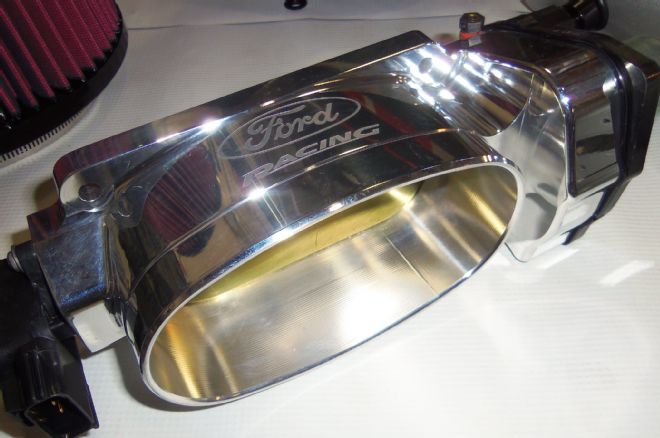 The next phase of our bolt-on modifications was swapping out the factory throttle-body in favor of the Ford Racing Performance Parts billet aluminum Super Cobra Jet one.
The next phase of our bolt-on modifications was swapping out the factory throttle-body in favor of the Ford Racing Performance Parts billet aluminum Super Cobra Jet one.
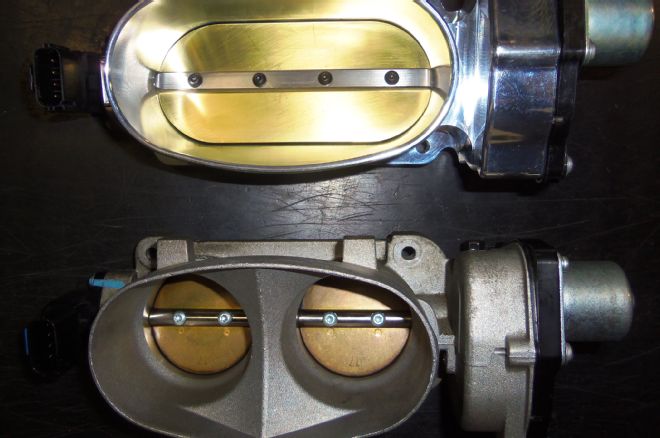 Here you can clearly see just how much bigger the Super Cobra Jet throttle-body is compared to the factory twin 60mm one. The Super Cobra Jet throttle-body features a large 148x65mm oval inlet with a single-blade design and flows up to 1797 cfm.
Here you can clearly see just how much bigger the Super Cobra Jet throttle-body is compared to the factory twin 60mm one. The Super Cobra Jet throttle-body features a large 148x65mm oval inlet with a single-blade design and flows up to 1797 cfm.
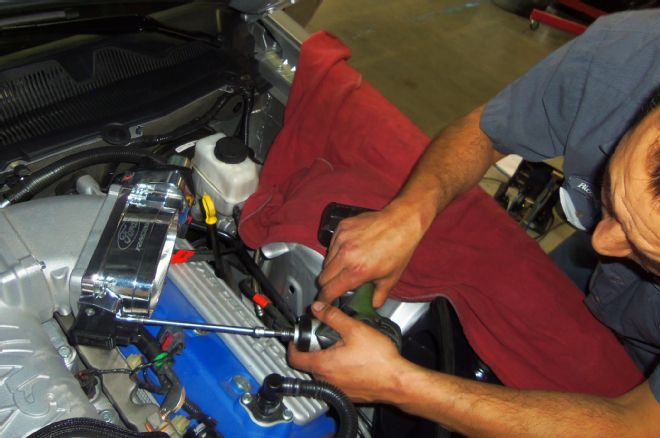 Topete bolted on the polished billet aluminum Super Cobra Jet throttle-body with the supplied hardware.
Topete bolted on the polished billet aluminum Super Cobra Jet throttle-body with the supplied hardware.
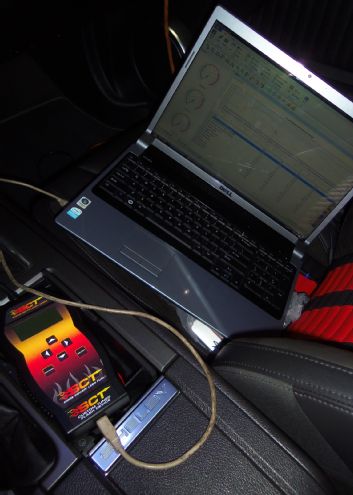 Topete went ahead and uploaded another Kurgan Motorsports tune with the SCT Performance Flash Tuner to complement the Super Cobra Jet throttle-body upgrade.
Topete went ahead and uploaded another Kurgan Motorsports tune with the SCT Performance Flash Tuner to complement the Super Cobra Jet throttle-body upgrade.
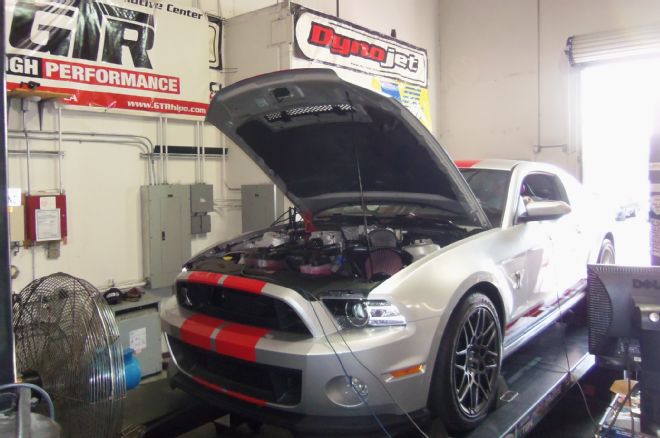 We made another pass on the dyno and were rewarded with 648.25 hp at 6,460 rpm. This time our boost came in at 14.64 pounds. We also picked up an extra 5 lb-ft of torque over our previous run, for a peak torque figure of 646.54 lb-ft.
We made another pass on the dyno and were rewarded with 648.25 hp at 6,460 rpm. This time our boost came in at 14.64 pounds. We also picked up an extra 5 lb-ft of torque over our previous run, for a peak torque figure of 646.54 lb-ft.
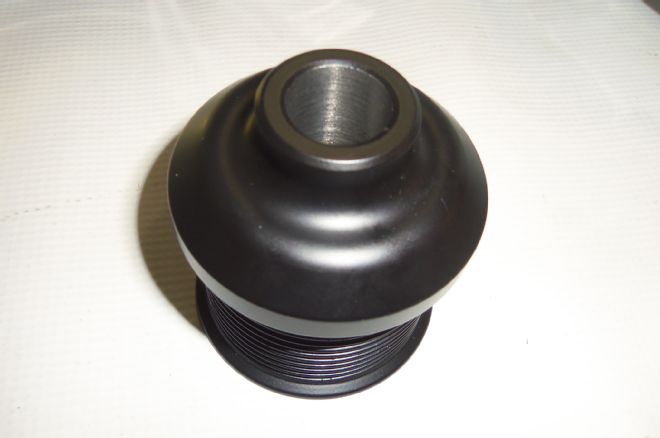 One of the quickest ways to make more power on any supercharged Mustang is to swap out the factory supercharger pulley in favor of a smaller pulley to increase the supercharger speed, which results in higher boost pressure. This VMP Tuning supercharger pulley looks very similar to the stock GT500 pulley but is only 2.4 inches in diameter and gains us 2-3 pounds of boost
One of the quickest ways to make more power on any supercharged Mustang is to swap out the factory supercharger pulley in favor of a smaller pulley to increase the supercharger speed, which results in higher boost pressure. This VMP Tuning supercharger pulley looks very similar to the stock GT500 pulley but is only 2.4 inches in diameter and gains us 2-3 pounds of boost
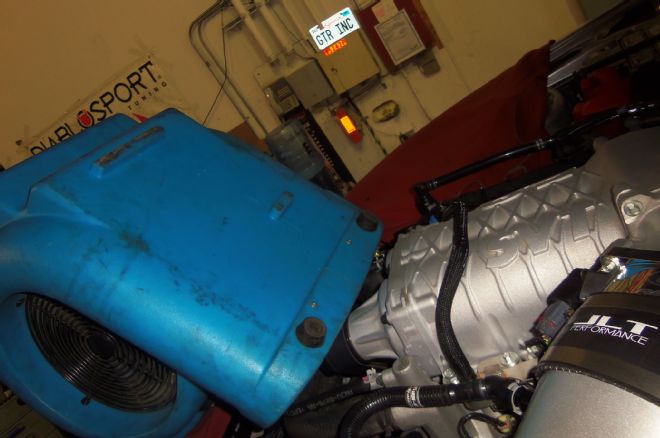 We let the factory supercharger cool off a bit before we attempted removing the pulley. While we waited, a fresh set of NGK V-Power TR6 spark plugs was installed.
We let the factory supercharger cool off a bit before we attempted removing the pulley. While we waited, a fresh set of NGK V-Power TR6 spark plugs was installed.
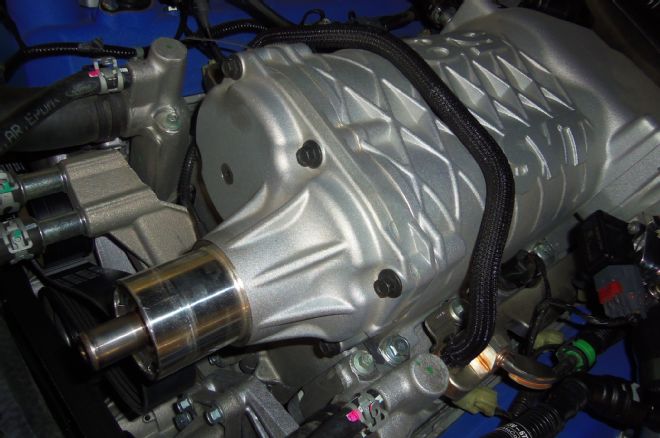 The supercharger pulley is pressed on, so you will need a special tool to remove it.
The supercharger pulley is pressed on, so you will need a special tool to remove it.
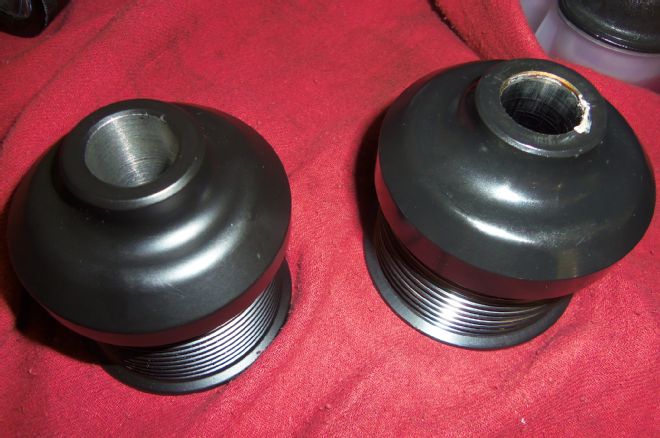
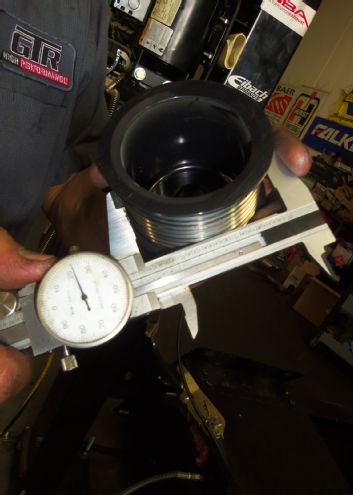
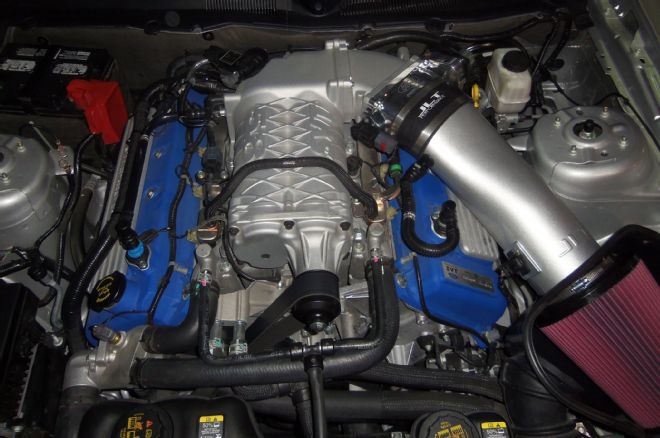 With our final modification done, we brought the car up to operating temperature and got it ready to make its final set of runs on the dyno at GTR High Performance.
With our final modification done, we brought the car up to operating temperature and got it ready to make its final set of runs on the dyno at GTR High Performance.
 After the dyno run, Bob Kurgan monitored our digital readouts in real time and was able to create a custom live tune that would make the most of all our modifications on the Shelby.
After the dyno run, Bob Kurgan monitored our digital readouts in real time and was able to create a custom live tune that would make the most of all our modifications on the Shelby.
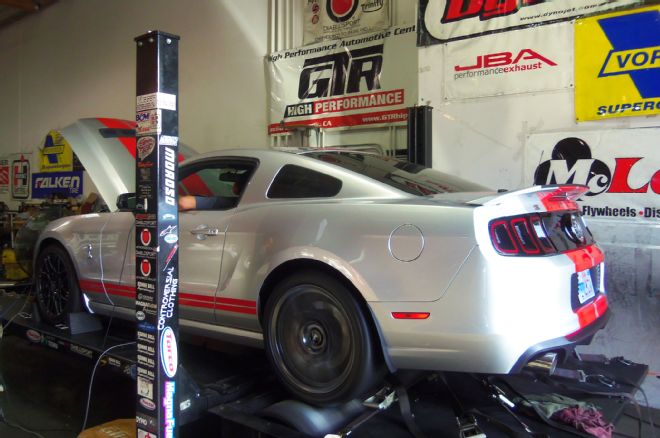 Our final run on the dyno resulted in 683 hp at 6,250 rpm at 16 pounds of boost. Our peak torque jumped up to just about 696 lb-ft, which means this Shelby GT500 is a whole lot faster than it has ever been.
Our final run on the dyno resulted in 683 hp at 6,250 rpm at 16 pounds of boost. Our peak torque jumped up to just about 696 lb-ft, which means this Shelby GT500 is a whole lot faster than it has ever been.
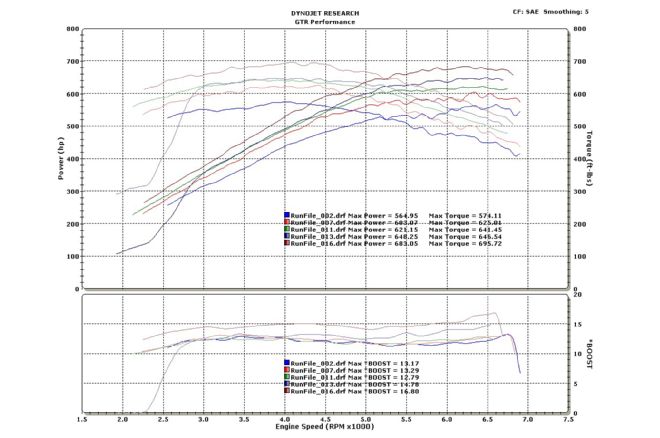 The proof is in the pudding, or in this case, on the dyno chart. As you can see, we were able to increase both our rear-wheel horsepower and torque by 118 hp and 121 lb-ft.
The proof is in the pudding, or in this case, on the dyno chart. As you can see, we were able to increase both our rear-wheel horsepower and torque by 118 hp and 121 lb-ft.